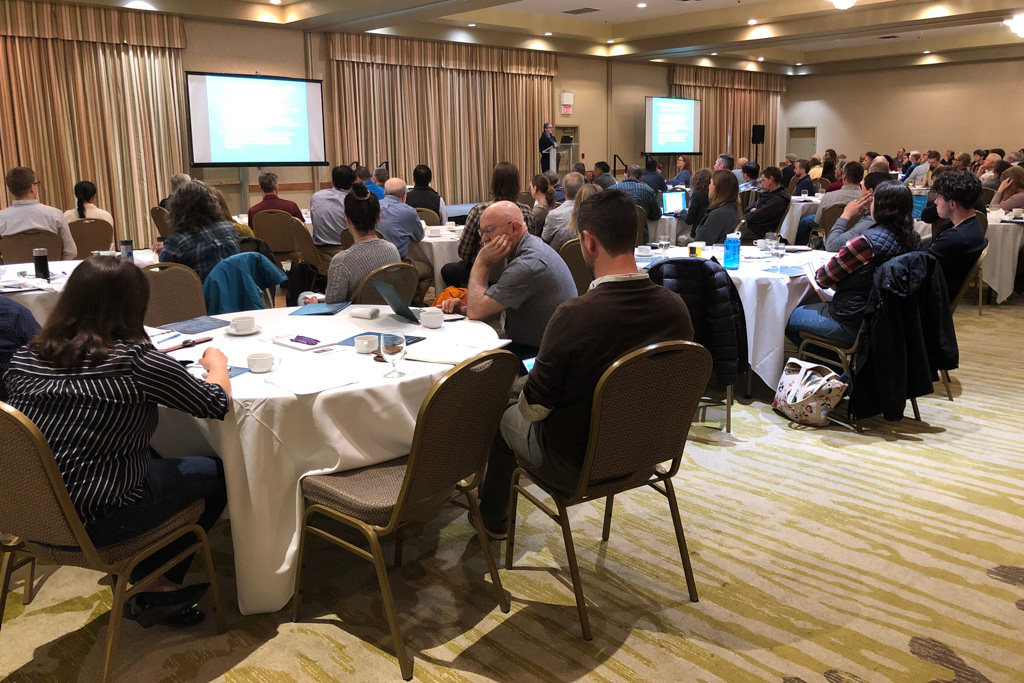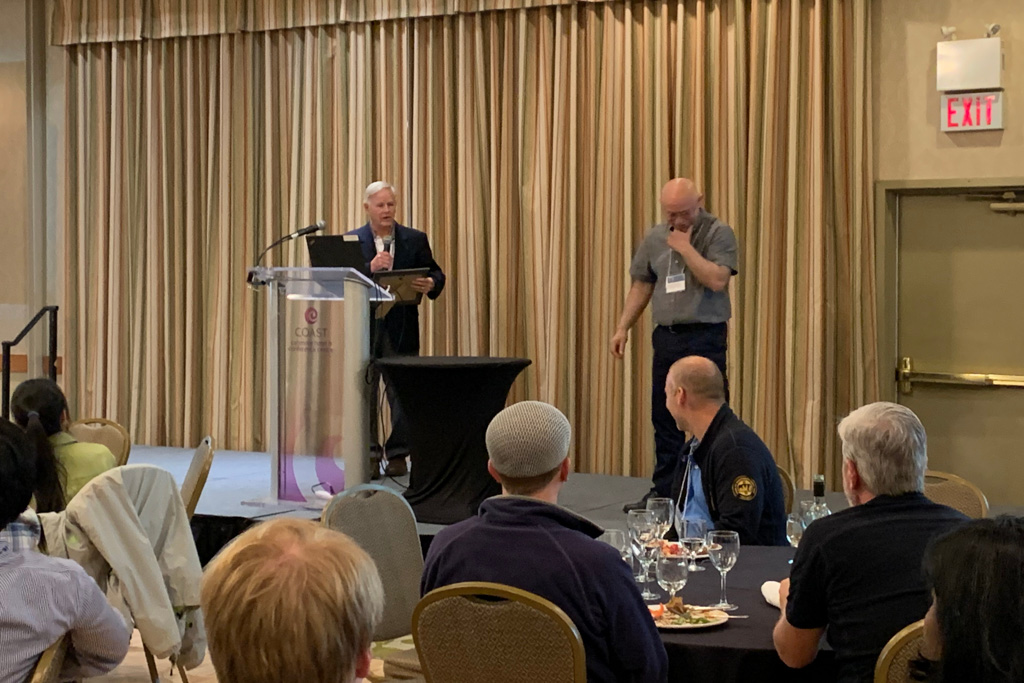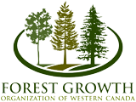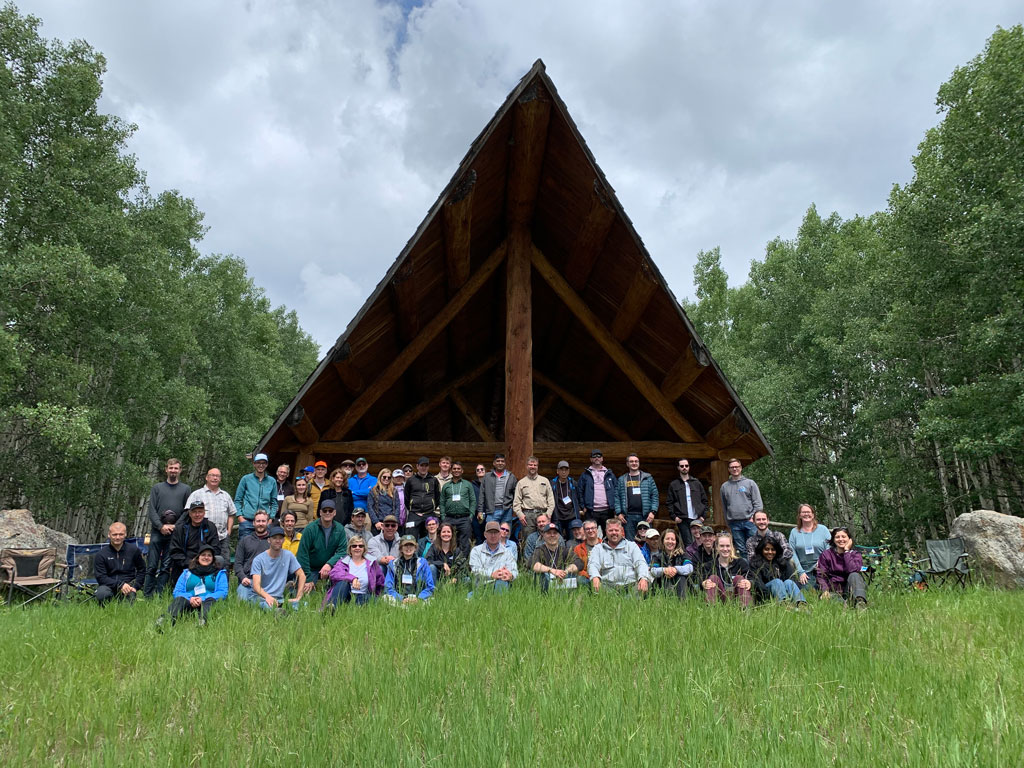Co-sponsored by the Western Mensurationists and the Forest Growth Organization of Western Canada.
About the Conference
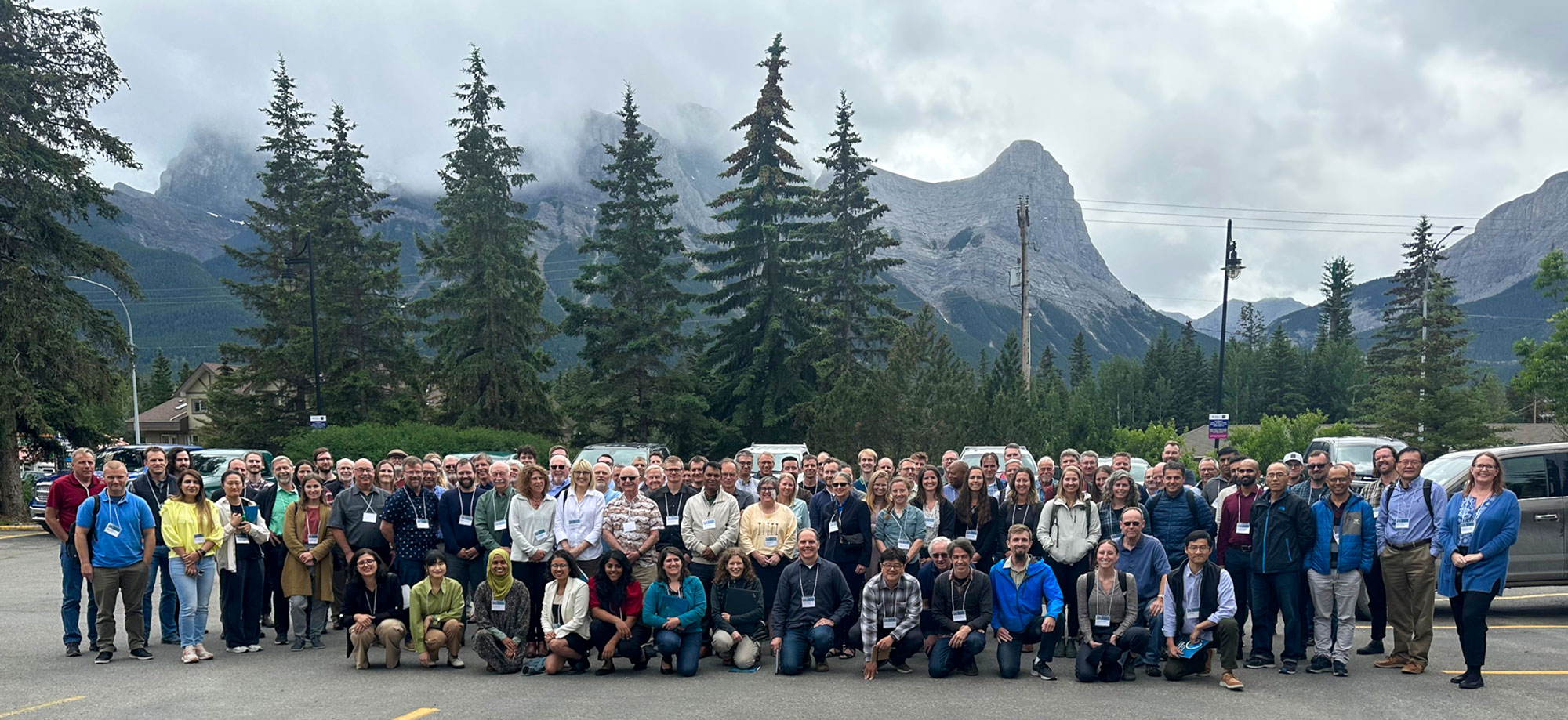
This in-person two-day conference and optional one-day field tour was held in and around Canmore, Alberta. While showcasing innovative research and novel approaches to growth and yield throughout the country and from the international community, this conference addressed concerns around declining growth and yield capacity and highlighted the important contributions made by growth and yield to sustainable forestry. Vendors showcased technological innovations ranging from field measurement equipment to processing of complex datasets. Presentations and panel discussions focused on current growth and yield issues:
- Precision forestry and remote sensing
- Incorporating climate change into models
- Discussing successes and challenges in different forest regions
- Learning about new technology that can help address skilled labor shortages
- Building G&Y capacity and removing barriers to technology transfer
Keynote Addresses
The digital forest: opportunities for innovation and improved forest management

Dr. Rasmus Astrup, Norwegian Institute of Bioeconomy Research
Rasmus Astrup received his PhD from the University of British Columbia in 2006. Astrup currently works as Head of Research at the Norwegian Institute for Bioeconomy Research and is the director for a national Centre for research-based innovation named SmartForest. His main research focus is on utilizing emerging methods and technologies for improving information, information flow, and decisions as the foundation for sustainable forest management.
Can we meet increasing demands for forest growth and yield information under increased scope, changing inventory technologies, and uncertain climate and disturbance regimes?
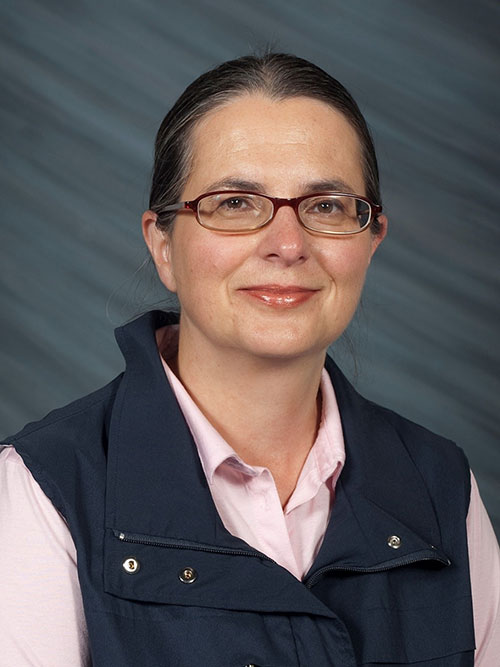
Dr. Valerie LeMay, University of British Columbia
Dr. LeMay has more than 40 years of experience in forestry practice, education, and research. Following her BSc and MSc studies at the University of Alberta, she worked as a Measurements Analysis Forester for the Alberta Forest Service until pursuing a PhD at the University of British Columbia (UBC). Dr. LeMay was hired as the first female professor in the Faculty of Forestry at UBC in 1989 and became a Registered Professional Forester in British Columbia shortly afterward. As a professor at UBC, Dr. LeMay has taught two generations of forest practitioners about the art and science of forest measurements/biometrics and has won two Killam Teaching Awards. She also won the 2021 Canadian Forestry Achievement Award from the Canadian Institute of Forestry (CIF). Her research spans the breadth of forest measurements/biometrics, including forest inventory, growth and yield, and tree allometry, often collaborating with scientists from across the globe. She also contributes to animal movements and habitat needs research, including African elephants and whales. She is a keen supporter of CIF-IFC and the International Organization of Forest Research (IUFRO), having held a number of offices in each.
A paradigm shift in empirical growth and yield modelling: towards climate-sensitive models and large-area predictions
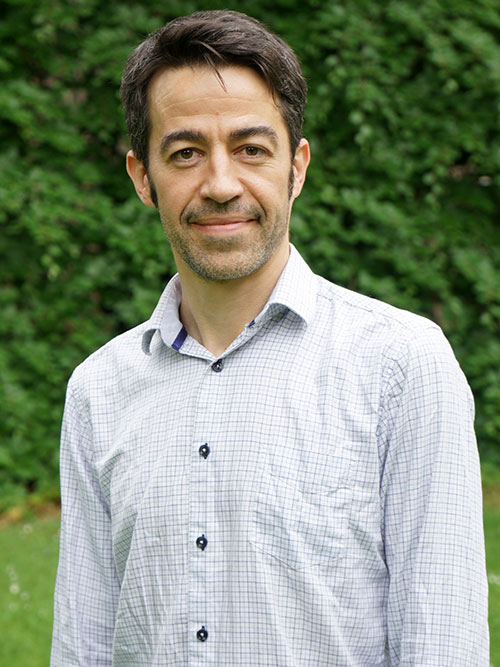
Dr. Mathieu Fortin, Canadian Forest Service
Mathieu Fortin is a research scientist in quantitative ecology at the Canadian Wood Fibre Centre. He obtained his PhD degree in forest biometrics from Laval University in 2006. From 2005 to 2010, he worked as a research scientist in forest growth modelling at the Forest Research Directorate of Quebec’s Ministry of Natural Resources. After two years as a research engineer in carbon accounting at the Institut National de la Recherche Agronomique (INRA), he was appointed at AgroParisTech, France, in 2012 as an Associate professor in forest biometrics. In 2019, he joined the Canadian Wood Fibre Centre. His research projects focus mainly on the development of stochastic growth models, upscaling techniques and statistical estimators. He is a member of the CAPSIS community of growth modellers since 2008 and he has a particular interest in the implementation of models into software.
Incorporating regeneration dynamics and reforestation treatment effects into G&Y models
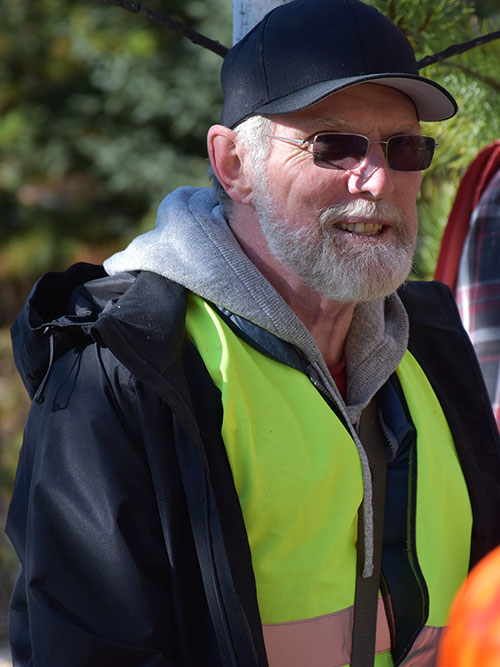
Dr. Dick Dempster, Dick Dempster Consulting Ltd.
Dick Dempster retired last year, after a 50-year career as a professional forester and forestry consultant. He obtained Bachelor of Science and Doctorate degrees in Forestry in the UK at the University of Wales, and worked in forest management in Jamaica and Newfoundland, before moving to Alberta in 1975. There, he was initially a forestry planner for Simpson Timber Company in Whitecourt, and then an Associate Professor at the University of Alberta Department of Forest Science, before establishing his own consulting business. He subsequently worked on and led numerous projects in forest policy, inventory, planning and development, both in Canada and overseas. In 1999 he became Director of the newly formed Foothills Growth and Yield Association, in which capacity he continued until 2007, when he returned to the UK. Since then, his main engagement in Alberta has been researching post-disturbance stand development with the FGrOW Foothills Pine Project Team.
Presentations
Tablet app for visualizing individual tree parameters with person-carried laser scanning (PLS) in forest inventory
Andreas Tockner, Dipl.-Ing., PhD Candidate, Institute of Forest Growth, University of Natural Resources and Life Sciences, Vienna
Alternative subsampling designs derived from aerial and terrestrial remote sensing technology
Dr. John Kershaw, Professor, Forest Mensuration, University of New Brunswick
Species identification from LiDAR
David Campbell, MScF, RPF, ForCorp Solutions Inc.
Generalizing DBH and height prediction in coast Douglas-fir and red alder
Dr. Bogdan Strimbu, Associate Professor, Oregon State University
Modeling aboveground carbon dynamics under different silvicultural treatments
Catherine Carlisle, Master of Forestry Candidate, Oregon State University
Census growth and yield models using only LiDAR and EFI data – no field data required
John Nash, Forest Ecologist, GreenLink Forestry Inc
Modelling tree-level western hemlock (Tsuga heterophylla (Raf.) Sarg.) responses to fertilization
Dr. Woognsoon Jang, Research Scientist, BC Ministry of Forests
Why you should NOT use site index
Greg Johnson, Greg Johnson Biometrics LLC and Dave Hamlin, Mt. Hood Biometrics LLC
Estimating changes in forest attributes with 3D remote sensing
Dr. Piotr Tompalski, Research Scientist, Pacific Forestry Centre, Canadian Forest Service
Application results of handheld mobile LiDAR study in Turkey
Ergin Çankaya, PhD Candidate, Forest Growth & Yield Lab, University of Alberta
A stand-level evaluation of FVS growth projections for a LiDAR forest inventory
Dr. Jacob Strunk, US Forest Service and Dr. Peter Gould, Mason Bruce & Girard
Commercial thinning and nitrogen fertilization increase merchantability in lodgepole pine: 20-year result
Apsana Kafle, MSc Candidate, Department of Renewable Resources, University of Alberta
The Tree and Stand Simulator (TASS): still providing understanding after 6 decades
Jeff Stone, Stand Development Modelling Research Scientist, British Columbia Ministry of Forests
Climatic sensitivities derived from tree rings improve predictions of the Forest Vegetation Simulator growth and yield model
Courtney Giebink, Oak Ridge Associated Universities; USDA Forest Service, Northern Research Station, Forest Inventory and Analysis
Stand structure classification and the indexing of diameter and height distributions
Dr. Ian S. Moss, RPF, Forest Inventory & Growth and Yield Consultant, Forestree Dynamics Ltd.
Putting stereo glasses on data scientists: EFI to AVI
Kat Gunion, Senior Forest Analyst, Forsite Consultants Ltd.
Lighting Talks
Mixing tree species along with density management to reduce drought susceptibility in coastal plantation forests of British Columbia
Surabhi Lukose, MSc Candidate, University of Alberta
Effects of vegetation management on Leaf Area Index (LAI) and drought tolerance in a regenerating boreal mixedwood
Benjamin Strelkov, MSc Candidate, Department of Renewable Resources, University of Alberta
Opportunities for long-term monitoring of mountain pine beetle effects using PSPs in Alberta
Dr. Sarita Bassil, Postdoctoral Research Scientist, Forest Growth & Yield Lab, University of Alberta
Growth and yield models of Alberta: Can they predict commercial thinning response?
Dr. Mostarin Ara, Postdoctoral Research Scientist, Forest Growth & Yield Lab, University of Alberta
Conference Photos
Photos from the optional field tour can be found here.

